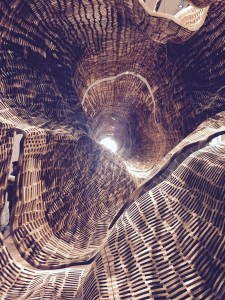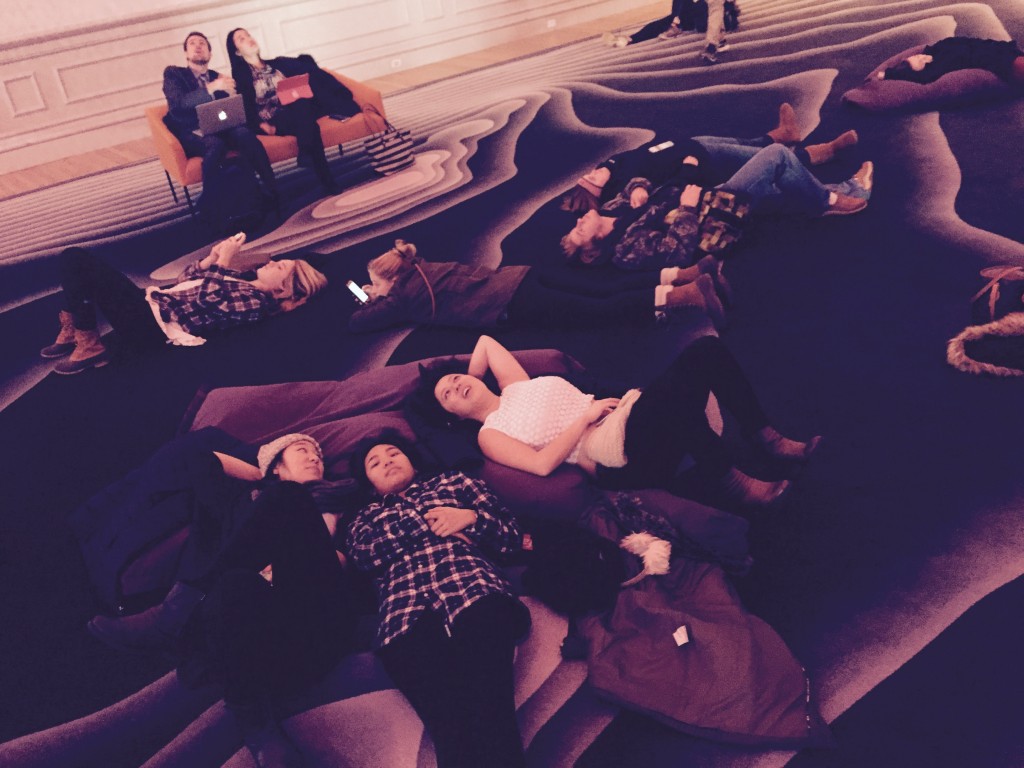As an educator, I can’t think of a more important, elusive, and agonizing question than this doozy: How do you measure success?
So you can imagine my surprise when I discovered a new source of inspiration for how we should answer it, by way of a 27,000-acre fish farm at the tip of the Guadalquivir river in Southern Spain.
The farm, Veta La Palma, is led by a biologist named Miguel Medialdea. I learned about Miguel’s work from a 2010 TED Talk by renowned chef Dan Barber, who first became aware of Miguel after discovering just how unsustainable “sustainable fish farming” practices really were.
To produce just one pound of farm-raised tuna, for example, requires fifteen pounds of wild fish to feed it. Nothing sustainable about that. In response, industry leaders have dramatically reduced their “feed conversion ratio” by feeding their fish, well, chicken – or, more specifically, chicken feathers, skin, bone meal and scraps, dried and processed into feed.
“What’s sustainable about feeding chicken to fish?” Barber asks his audience, to peals of laughter. Yet there’s nothing funny about the ways we have decimated the large fish populations of the world. And there’s nothing funny about an agribusiness model that, in an effort to find ways to feed more people more cheaply, has in fact been more about the business of liquidation than the business of sustainability.
Enter Veta La Palma, formerly a cattle farm, and now a sprawling series of flooded canals, flourishing wildlife, and fecund marshland. In fact, because it’s such a rich system, Veta La Palma’s fish eat what they’d be eating in the wild. “The system is so healthy,” Barber explains, “it’s totally self-renewing. There is no feed.
“Ever heard of a farm that doesn’t feed its animals?”
Eventually, Barber asked his host the $64,000 question: how they measure success. Medialdea pointed to the pink bellies of a thriving population of flamingos.
“But Miguel,” Barber asked, “isn’t a thriving bird population like the last thing you would want on a fish farm?”
“No,” he answered. “We farm extensively, not intensively. This is an ecological network. The flamingos eat the shrimp. The shrimp eat the phytoplankton. The pinker the belly, the better the system.”
It was at this point I thought about how much of Miguel’s work had lessons for our own.
Like agribusiness, education has been shaped by the logic of a single question for as long as anyone can remember. Indeed, just as feeding more people more efficiently has led us into a feedback loop in which we constantly erode our own global supply of fish, educating more children more efficiently has yielded a shell game of metrics that have allowed us to falsely claim success (or failure), when in fact all we have been doing is eroding a different, more precious supply: our ability to fall in love with ideas.
You know this, but it’s worth saying again: the ultimate measures of success in our schools cannot be reading and math scores, or better attendance, or higher graduation rates (though those are all good things). These are not our Pink Flamingos, because they are not indicative of a thriving ecology in our schools.
At Veta La Palma, the best way to measure the system’s overall quality is by gauging the health of its predators. What is the equivalent measure in our schools? If we started to view our schools less as solitary islands, and more as single links in a systemic chain of each child’s growth and development, how would we measure success then? What would we need to start, stop and keep doing?
For starters, I think we’d want to track every available measure of that child’s overall health: mental, nutritional, social, emotional, developmental – and yes, intellectual. We’d stop assuming that schools are capable of being assessed in a vacuum, and start making sense of their effectiveness amidst a larger network of institutions and services (think how much this would change the perception of private schools). And we’d keep looking at existing efforts to apply a more ecological approach to learning, from the Community Schools model, to instruments that help measure a child’s sense of hope, engagement and well-being, to individual schools that proactively measure – wait for it – curiosity and wonder, to, yes, the nearly 22,000 Montessori schools around the world.
These priorities would also lead to a different set of questions that could drive future innovations:
- Who else, and where else, are our children receiving sources of nourishment for their growth and development? Are the connections between those resources and the school implicitly or explicitly drawn?
- What are the components of each community’s ecosystem of youth development and support?
- What are our young people bringing with them to school each day – figuratively and literally – and how is our work at school explicitly designed to help them find the proper balance between their different developmental needs?
- How can we better measure the optimal reflections of normalized growth – i.e., self-awareness, self-control, self-direction, and self-satisfaction?
- How much student learning are we expecting to occur in the school building? How else can we leverage the larger community to be an active partner in the overall learning process?
- In what ways are we creating everyday conditions for wonder and curiosity?
- How clearly have we articulated our school’s ultimate vision of success, and how clearly do our students and their families understand how what we do each day is in service of that larger goal?
To transform sustainable farming, Dan Barber proposed a new question: “How can we create conditions that enable every community to feed itself?
The same lessons of scale are true for sustainable schooling. As Miguel Medialdea puts it, “I’m not an expert in fish; I’m an expert in relationships.”
So are America’s educators. The central goal of schooling is not to instill knowledge, but to unleash human potential. The central model for schooling is not a factory; it’s an ecosystem. And the central measure of success is not a single benchmark, but a comprehensive ability to affirm the overall health of the systems that surround our children as they learn and grow.
So let’s get serious about applying two billion years’ worth of proof points in order to build, and measure, the ecological networks our kids actually need in order to learn and grow. It’s the only way to find the Pink Flamingos that have eluded us thus far.


Recent Comments